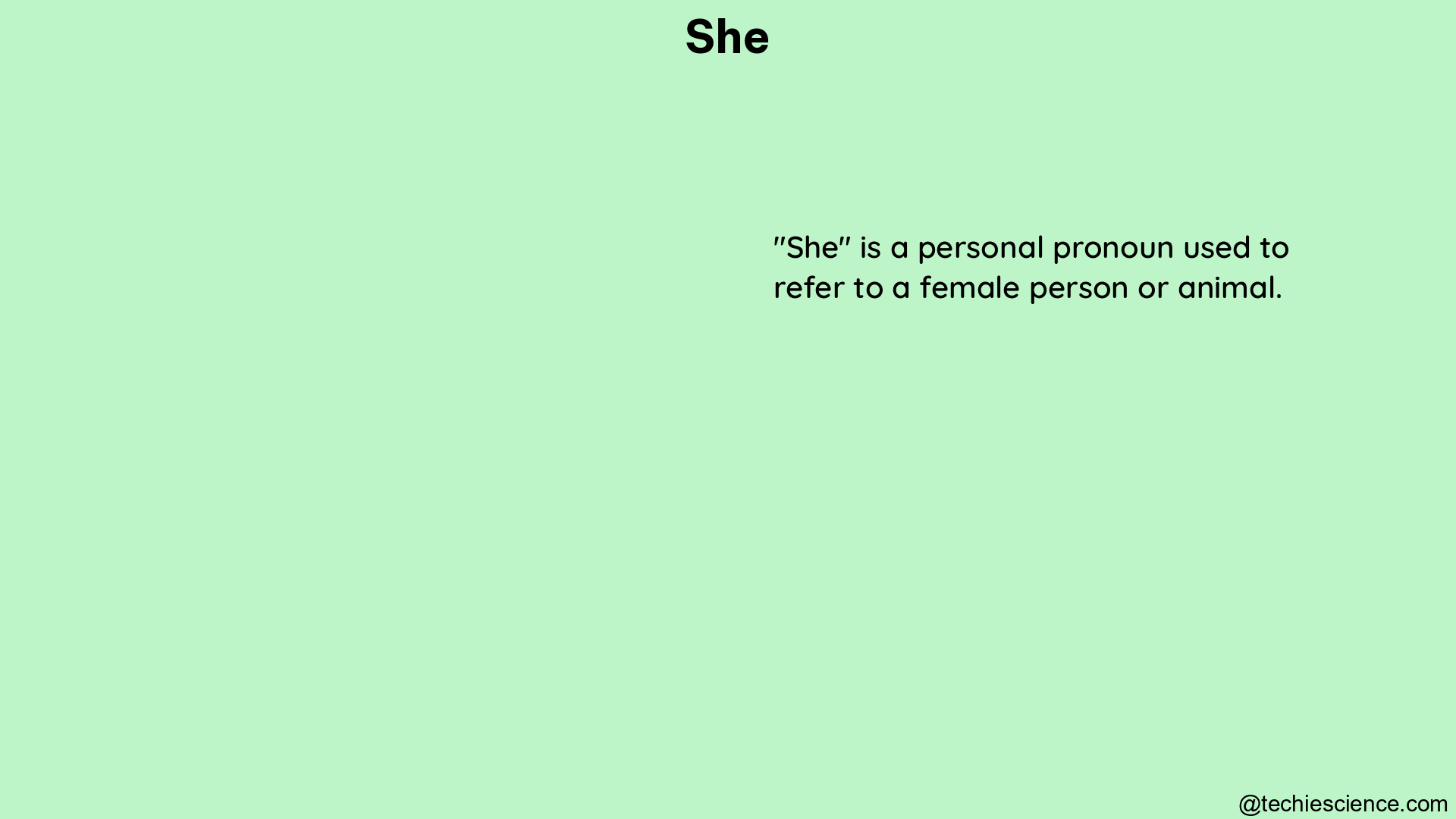The Grammatical Specifications of “She”
“She” is a crucial pronoun in the English language, used extensively to refer to female persons or animals. Understanding the advanced details and grammatical specifications of “she” is essential for effective communication and writing. Let’s dive into the intricacies of this important pronoun.
Subject Pronoun
As a subject pronoun, “she” is used as the subject of a sentence, replacing a female noun or a noun that refers to a female entity. This means that “she” performs the action in the sentence.
Example:
– “She is going to the store.” (Here, “she” is the subject of the sentence.)
Object Pronoun
The object form of “she” is “her,” which is used when the female person or animal is the object of the action. In other words, “her” represents the recipient of the action.
Example:
– “I gave the book to her.” (Here, “her” is the object of the action “gave.”)
Possessive Adjective
“Her” is also used as a possessive adjective to indicate ownership or possession by the female person or animal.
Example:
– “Her car is red.” (Here, “her” indicates that the car belongs to the female person.)
Reflexive Pronoun
The reflexive form of “she” is “herself,” which is used when the action is being performed by and on the same female person or animal.
Example:
– “She washed herself.” (Here, “herself” is the reflexive form of “she.”)
Advanced Grammatical Structures with “She”

Understanding the usage of “she” in various grammatical structures is crucial for effective communication. Let’s explore some advanced examples:
Simple Sentence
In a simple sentence, “she” is used as the subject of the sentence.
Example:
– “She is a doctor.”
Compound Sentence
In a compound sentence, “she” can be used as the subject of multiple clauses.
Example:
– “She went to the store, and she bought some milk.” (Here, “she” is used twice as the subject of two clauses.)
Complex Sentence
In a complex sentence, “she” can be used as both the subject and the object of the sentence.
Example:
– “When she arrived, she realized she had forgotten her keys.” (Here, “she” is used as both the subject and the object of the sentence.)
Contextual Usage of “She”
The usage of “she” can vary depending on the context and the specific situation. Let’s explore some additional examples to illustrate the versatility of this pronoun.
Formal vs. Informal Settings
In formal settings, such as academic or professional contexts, the use of “she” may be more prevalent and preferred. In informal settings, the usage of “she” may be more relaxed and interchangeable with other pronouns, depending on the speaker’s preference and the context.
Example (Formal):
– “The researcher presented her findings at the conference.”
Example (Informal):
– “My friend, she’s going to the movies tonight.”
Personification
“She” can also be used to personify inanimate objects or abstract concepts, giving them a feminine identity.
Example:
– “The ship sailed gracefully across the ocean, her sails billowing in the wind.”
– “Nature, she is a force to be reckoned with.”
Hypothetical Scenarios
“She” can be used in hypothetical scenarios or thought experiments to explore different perspectives or possibilities.
Example:
– “If she were to win the lottery, how would her life change?”
Reference Links
- Grammarly: A Comprehensive Guide to Subject Pronouns
- Purdue Online Writing Lab: Pronouns
- Cambridge Dictionary: She

The lambdageeks.com Core SME Team is a group of experienced subject matter experts from diverse scientific and technical fields including Physics, Chemistry, Technology,Electronics & Electrical Engineering, Automotive, Mechanical Engineering. Our team collaborates to create high-quality, well-researched articles on a wide range of science and technology topics for the lambdageeks.com website.
All Our Senior SME are having more than 7 Years of experience in the respective fields . They are either Working Industry Professionals or assocaited With different Universities. Refer Our Authors Page to get to know About our Core SMEs.